
Posts Tagged: Pollinators
Syrphid Flies Are Pollinators, Too
Sometimes overlooked as pollinators are the syrphid flies, also known as "hover flies" or "flower flies." Unfortunately, they are often mistaken for honey bees. Hey, if it's a critter on a flower, it's a bee, right? Not necessarily! Syrphid flies are easily distinguished from honey bees....
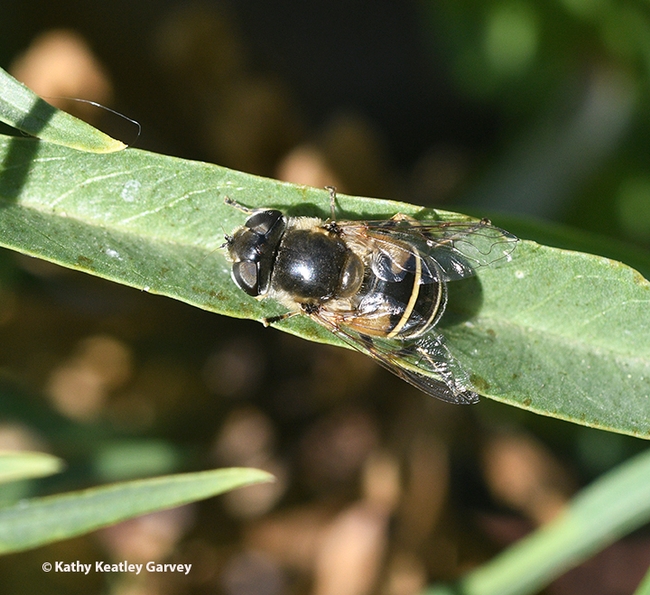
A dorsal view of a syprhid fly sunning itself on a leaf. (Photo by Kathy Keatley Garvey)
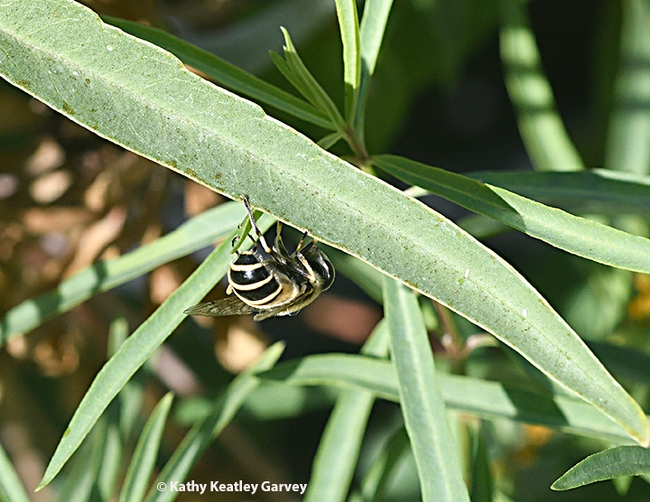
The syprhid fly senses danger and slips under a leaf. (Photo by Kathy Keatley Garvey)
Monarch Butterflies as Pollinators
"More than beautiful, monarch butterflies contribute to the health of our planet. While feeding on nectar, they pollinate many types of wildflowers.--National Park Service. Have you ever seen pollen on a monarch butterfly? This morning a male migrating monarch, probably on its way to coastal...
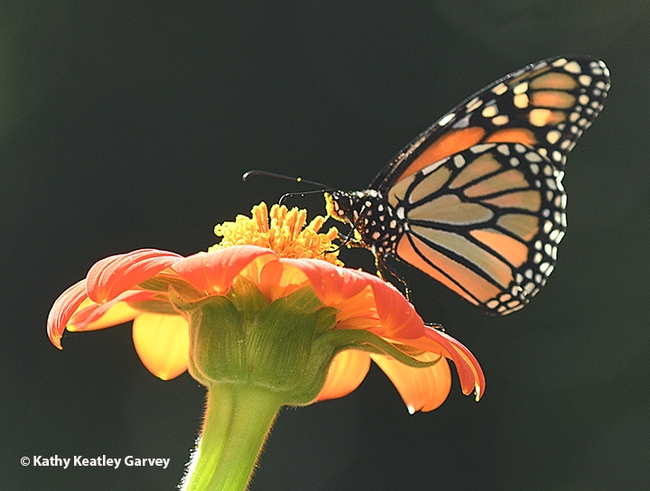
Bees are the most well known pollinators, but butterflies, including monarchs, are pollinators, too. This monarch butterfly, sipping nectar in a Vacaville garden, came up with a head full of pollen. (Photo by Kathy Keatley Garvey)
Scott McArt: The Risk of Pesticides to Pollinators
"The use of synthetic chemical pesticides is central to current agricultural practices worldwide. But what is the cost to wildlife via non-target exposures? This talk will summarize when there's risk to bees, when there isn't, and what types of research are most likely to influence farmers,...
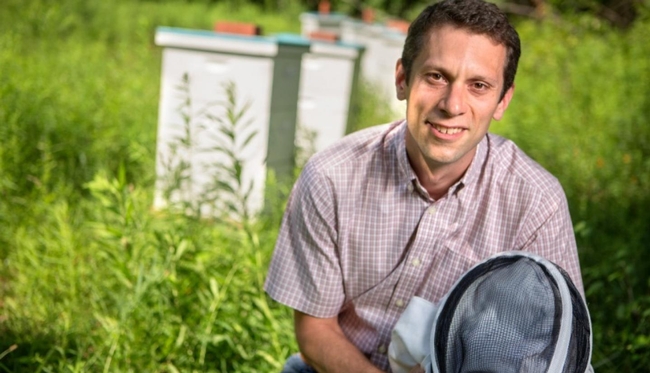
Scott McArt of Cornell will speak on "Pesticide Risk to Pollinators: What We Know and What We Need to Know Better" at the Wednesday, May 4 virtual seminar hosted by the UC Davis Department of Entomology and Nematology.
Seminar Topics: From Mammoth Wasps to Medflies to Nematodes
Ready to learn about mammoth wasps, medflies, nematodes and pesticide risks to polilnators, or delve into such topics as "Mystery of the Missing Microbes: Why Do Bees Keep Losing Their Symbionts?” Coordinator Shahid Siddique, assistant professor of nematology,...
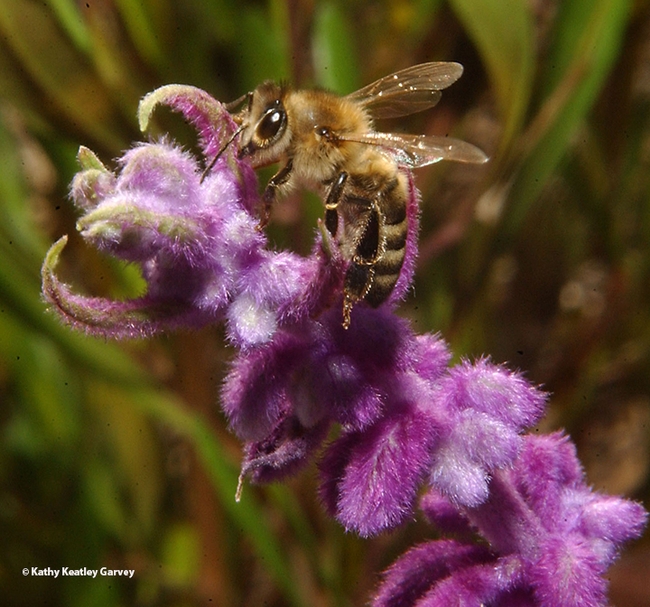
Bees will be among the spring seminar topics hosted by the UC Davis Department of Entomology and Nematology. UC Irvine faculty member Tobin Hammer will speak on "Mystery of the Missing Microbes: Why Do Bees Keep Losing Their Symbionts?" (Photo by Kathy Keatley Garvey)
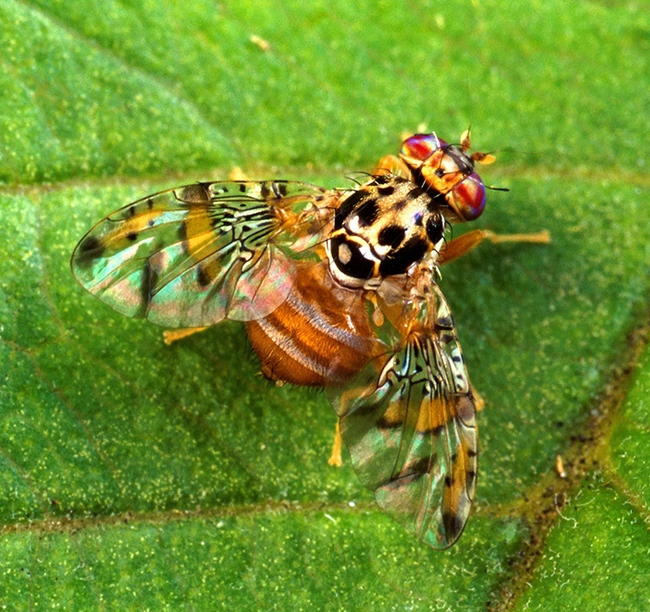
The Mediterranean fruit fly will be the topic of UC Davis distinguished professor James R. Carey's seminar on May 25. (Photo by Scott Bauer, U.S. Department of Agriculture)
Are Honeybees the Most Effective Pollinators?
There they were. Together. The scene: A honeybee (Apis mellifera) and a bumblebee (Bombus vosnesenskii) nectaring on a purple coneflower (Echinacea purpurea) in a UC Davis bee garden. If you've observed honeybees and wild bees foraging in your garden, you've probably wanted to...
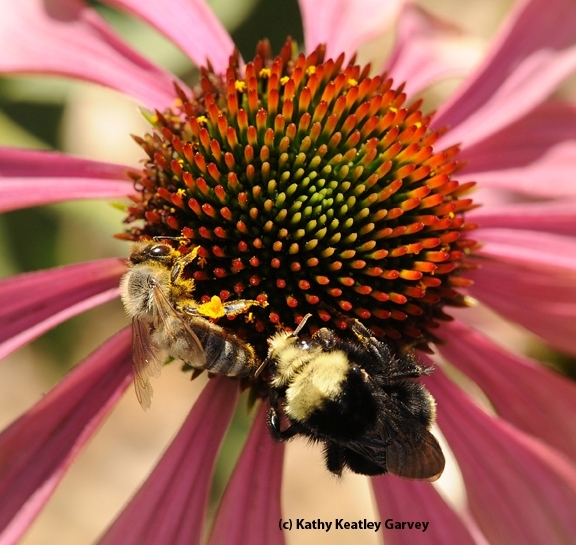
A honeybee (Apis mellifera) and a bumblebee (Bombus vosnesenskii) nectaring on a purple coneflower (Echinacea purpurea) in a UC Davis bee garden. (Photo by Kathy Keatley Garvey)
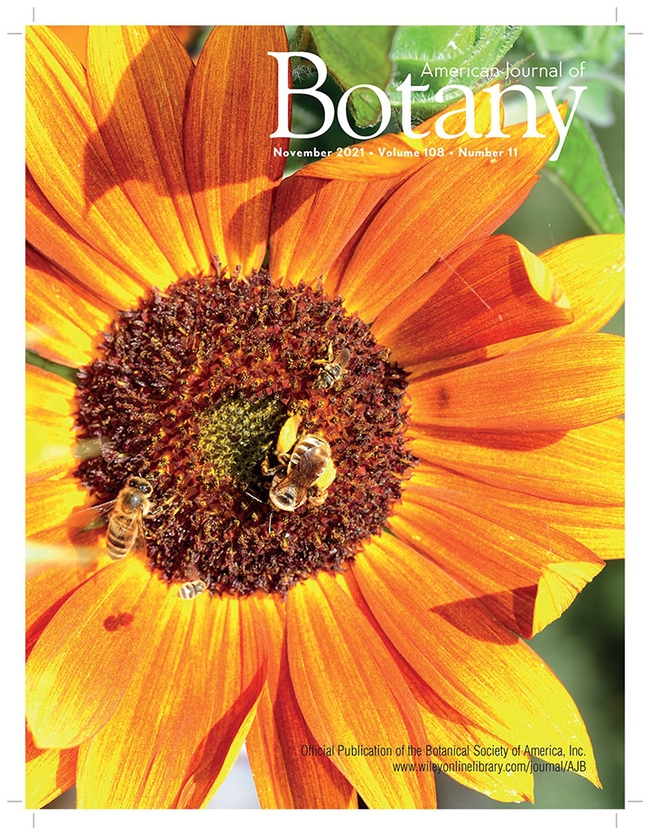
This is the cover of the American Journal of Botany, featuring several species of bees on a sunflower, Helianthus sp, (Cover photo by Kathy Keatley Garvey)
